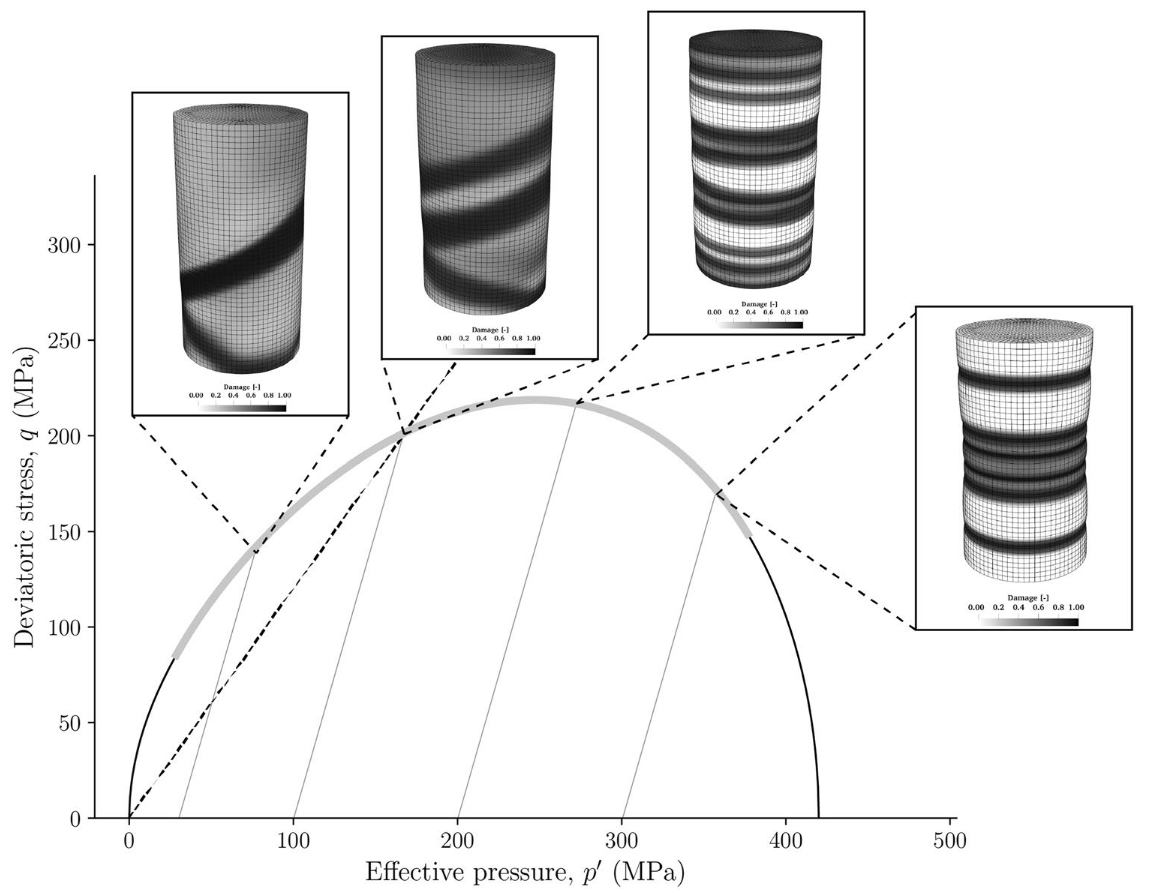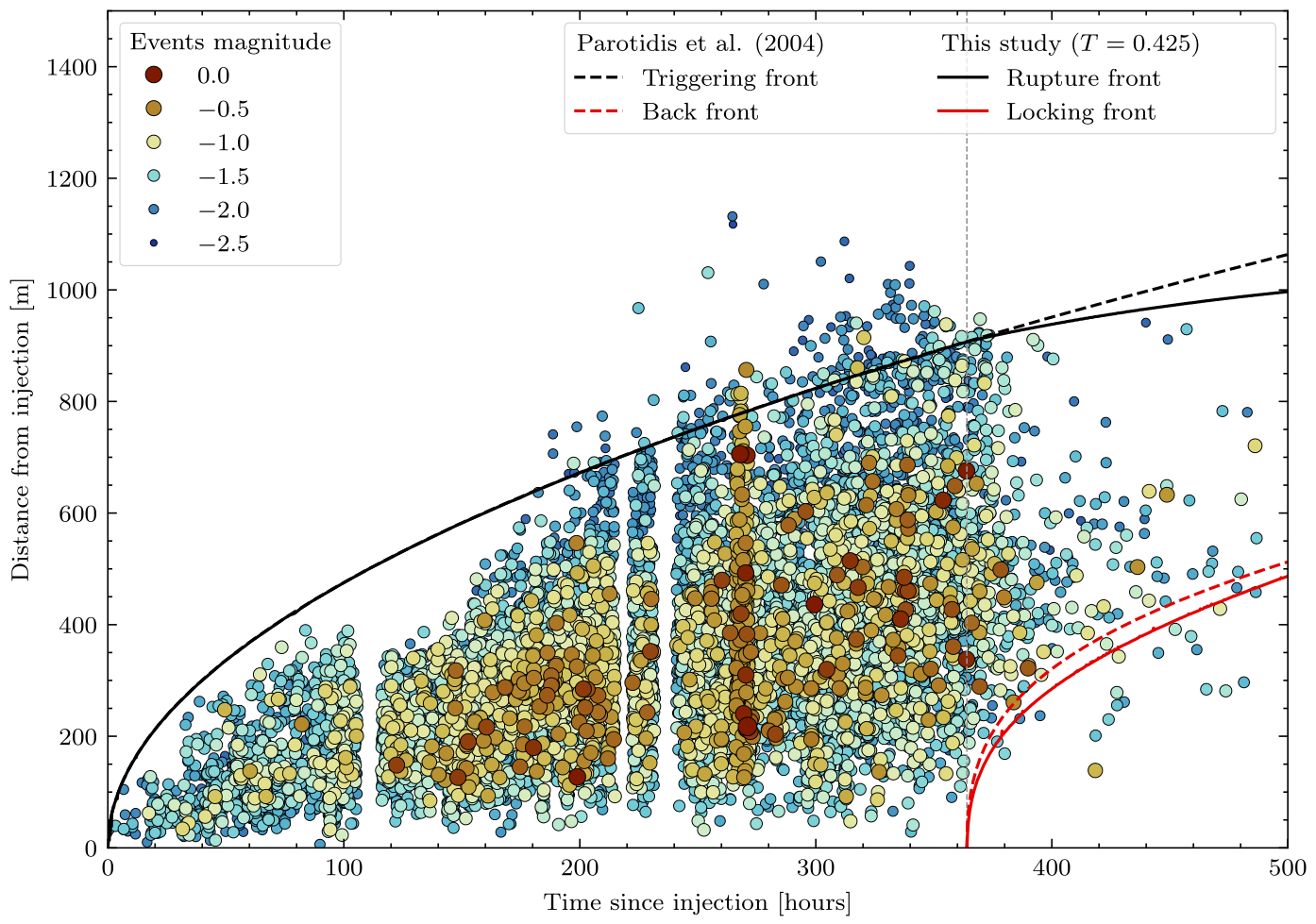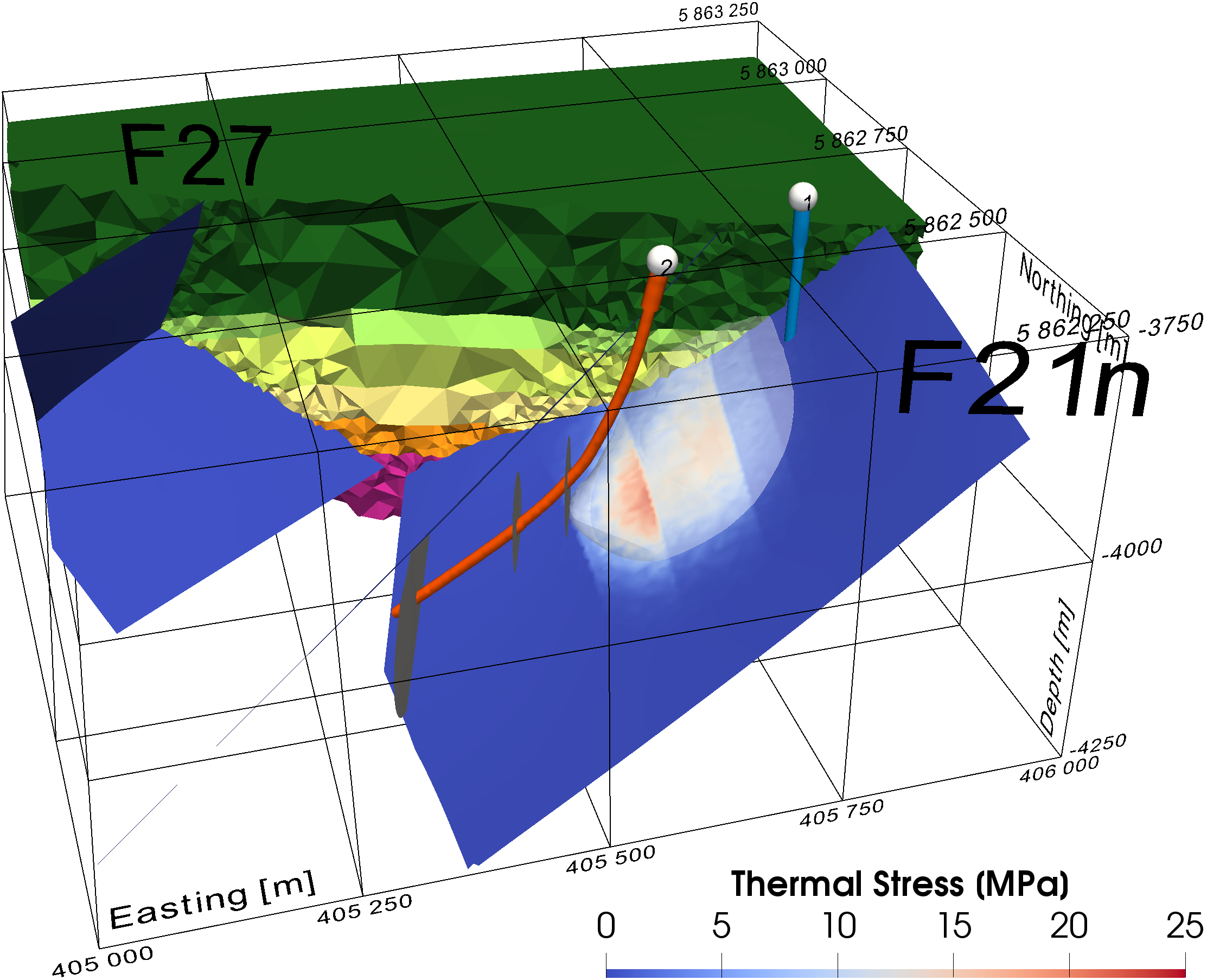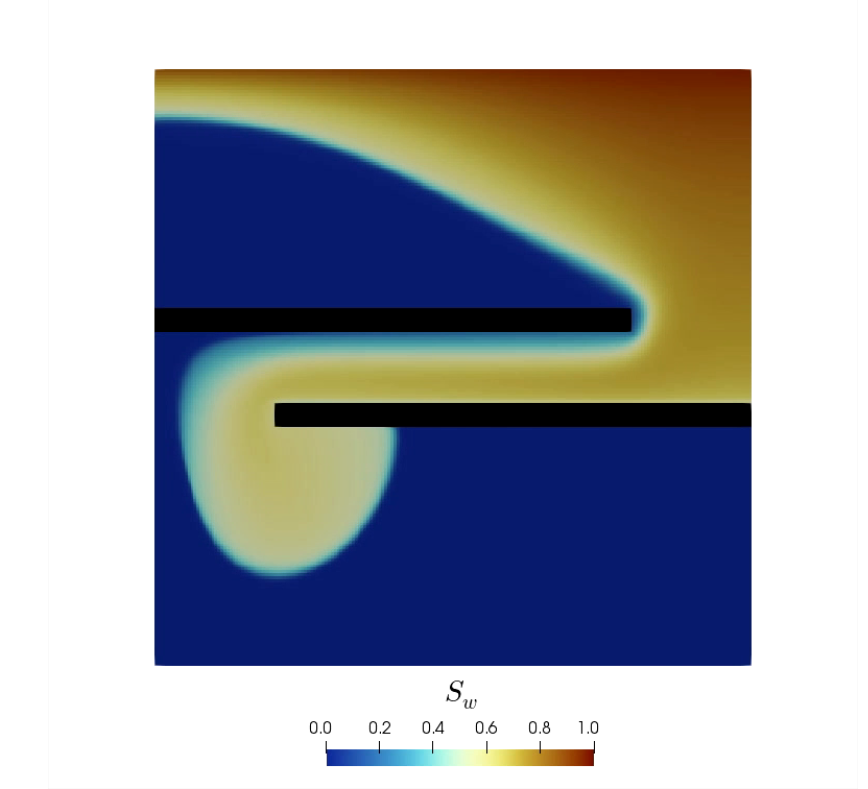Research

Constitutive modeling in rock mechanics
Critical conditions for many important geological and geotechnical problems rely on dynamic processes that occur on a large range of temperature and pressure conditions and potentially on geological time-scales. In this context, reliable constitutive models for estimating the risk of failure of geomaterials under anthropogenic and plate tectonic loads are essential. In our group, we develop thermodynamic-consistent constitutive models for geomaterials aiming at predicting (i) the material failure and strain localization, (ii) the transition from brittle to ductile failure with pressure, temperature, and strain rate conditions, (iii) the evolution of transport properties (porosity and permeability) throughout all failure styles.

Mechanics of induced seismicity
Fluid sources in the subsurface, either natural or anthropogenic, are known to be responsible for the onset of aseismic slip on surrounding fault surfaces. Transient natural fluid sources, such as metamorphic dehydration reactions, can lead to the onset of seismicity swarms, slow slip events, or episodic tremors. On the other hand, fluid injection performed in the context of subsurface energy and storage applications can lead to the onset of aseismic slip, and possibly - if not constrained - to major induced seismic events. Our research focuses on a mechanistic understanding of the coupling between fluid pressurization and fault slip and could therefore have important implications for mitigating the risk of induced seismicity.

Geothermal energy production and storage
Geothermal energy production consists in extracting heat from the subsurface by pumping fluid in deep geological reservoirs. The heat extracted can be used in different manners, such as a direct use with district heating or to generate power if higher temperatures are extracted. This technology allows to produce carbon-free energy and therefore is essential to reduce our dependence on fossil fuels. Several challenges are usually encountered while developing this technology such as the difficulties to maintain sustainable injection and production rates, the impacts of thermal stresses on the transport properties, and the risk of induced seismicity during the developement (stimulation treatments) or the operations. Our research aims at unravelling the role of fluid pressure and temperature changes around geothermal wells and the impacts of the deformation they induce on transport properties and on the stability of the surrounding faults.

Carbon dioxyde and hydrogen geological storage
Underground carbon dioxide storage involves injecting carbon dioxide in supercritical form into porous rocks in the subsurface at depths greater than 1 km. The stored carbon dioxide is intended to be permanent to reduce carbon emissions. Hydrogen storage, on the other hand, is intended to be cyclical. Hydrogen is temporarily stored underground to be extracted at a later stage to meet peak energy demands. This technology aims to address the intermittent nature of several renewable energies such as solar or wind and thus help decarbonize many industrial sectors that currently rely on fossil fuels. Our research focuses on the technical challenges related to underground storage, such as the risk of leakage, quantifying uncertainties in reservoir characterization, and the risk of induced seismicity.
